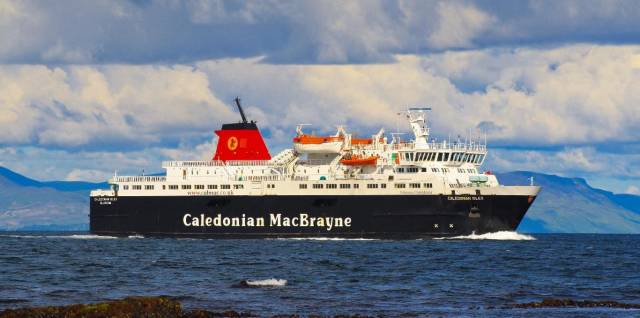#FerryMobility – Caledonian MacBrayne (CalMac) ferries to the Isle of Arran on the Forth of Clyde are trialling a new booking system that should improve the travelling experience for passengers with mobility problems.
The operator is testing a new reservations procedure on the MV Caledonian Isles and the MV Isle of Arran that will prioritise car spaces for people who need access to the lift from the car to the passenger deck. Two car deck spaces have now been identified next to the lifts specifically for wheelchair users and passengers who have difficulty walking.
The project trial was devised by CalMac's Ardrossan port manager, Colin McCort and Customer Operations Support Manager, Rosalind Robertson.
"Currently, we do not have a system in place that allows us to prioritise people who have difficulty getting around. By designating specific car spaces those people will now be able to exit their vehicle directly into the lift that takes them to main deck. Sailing, by its nature, presents barriers to people with mobility issues but this is another small step toward improving the travelling experience for all our passenger whatever their needs," explained Rosalind.
Customers who need mobility assistance when booking on the Ardrossan-Brodick route should now book directly through Customer Contact Centre's freephone number 0800 066 5000 to reserve their space.
The North Ayrshire Access Panel was closely involved in the development of the new booking system.
"The panel members were pleased to be approached by Caledonian MacBrayne to assist in the development of this new system. This is a welcome improvement for passengers that need a bit more help when sailing. We look forward to continuing our work with CalMac on this and other projects," said Panel chairman, Peter Joyce.
The new system will also allow marshals to identify which vehicles are to be prioritised dockside and direct them to specific waiting spaces.
"After closely monitoring the success of this trial we can hopefully roll it out across the network for all vessels with lift access," added Rosalind.
































































